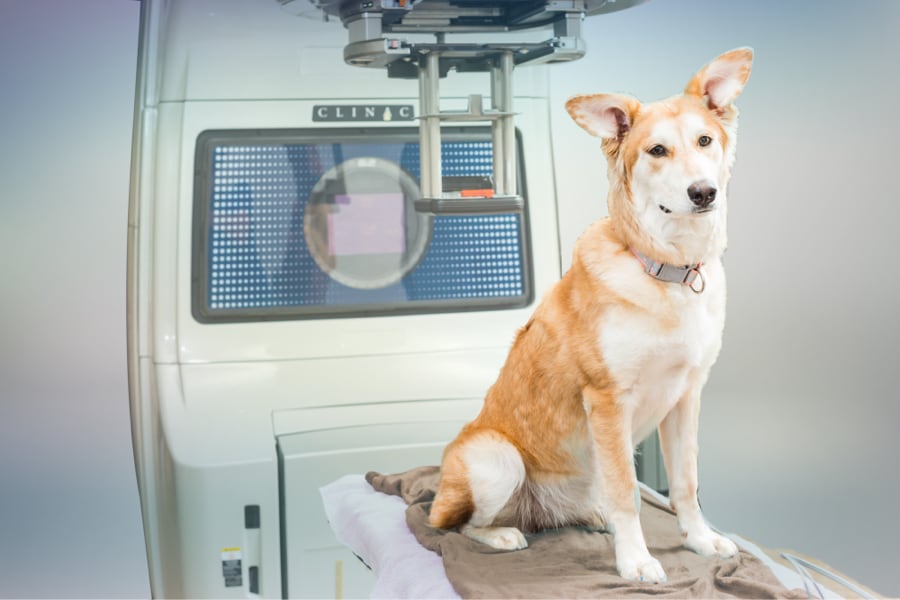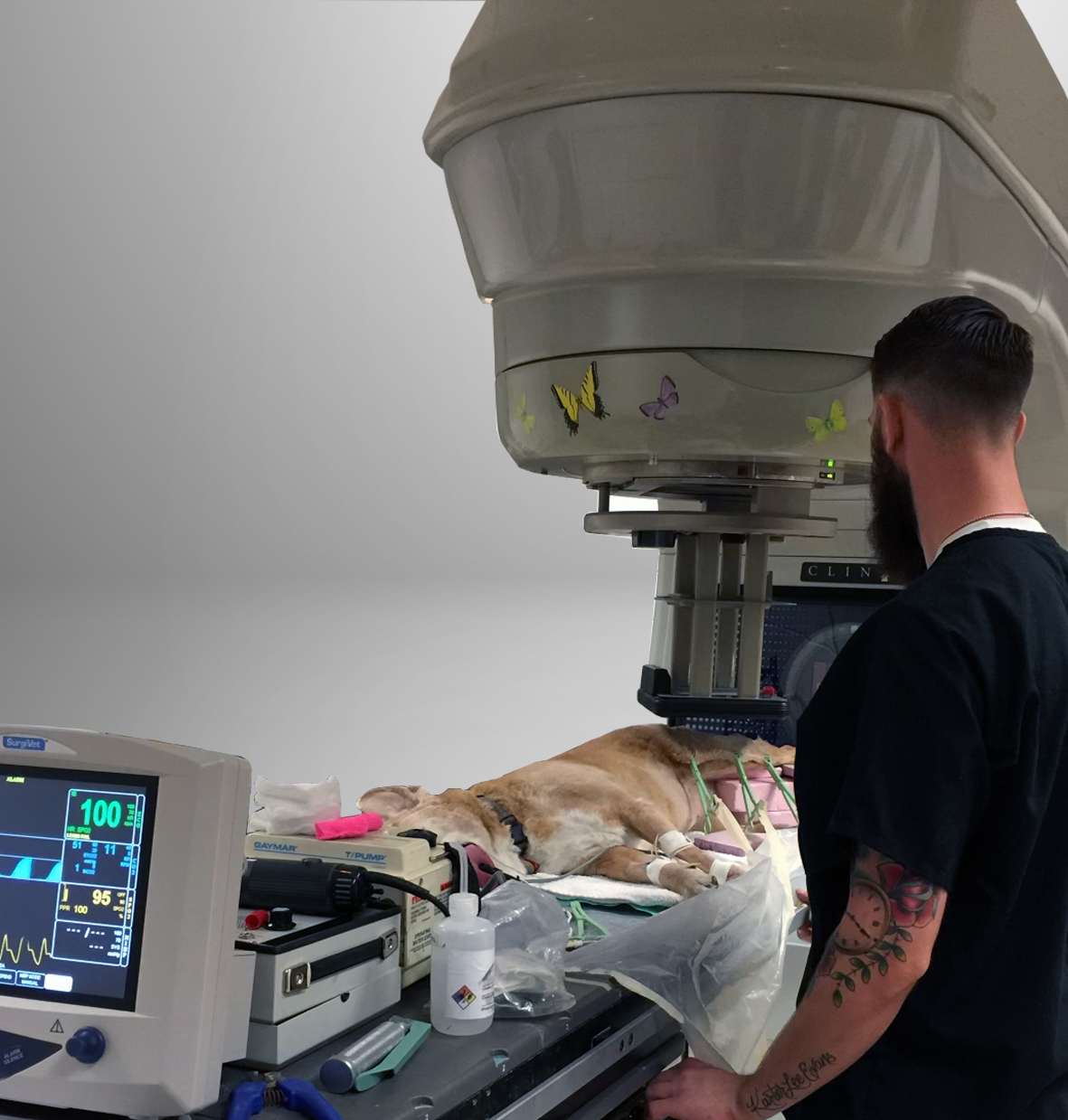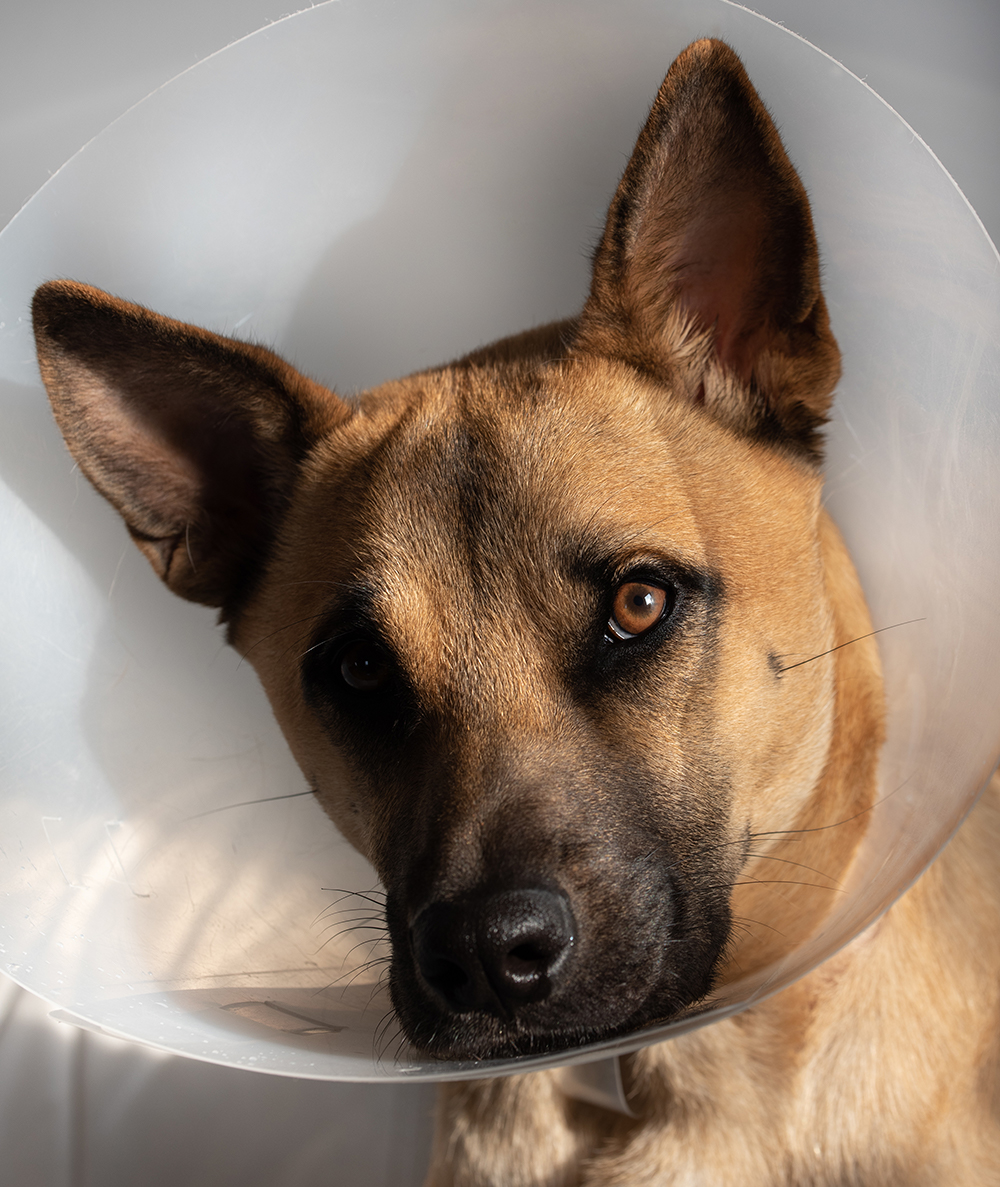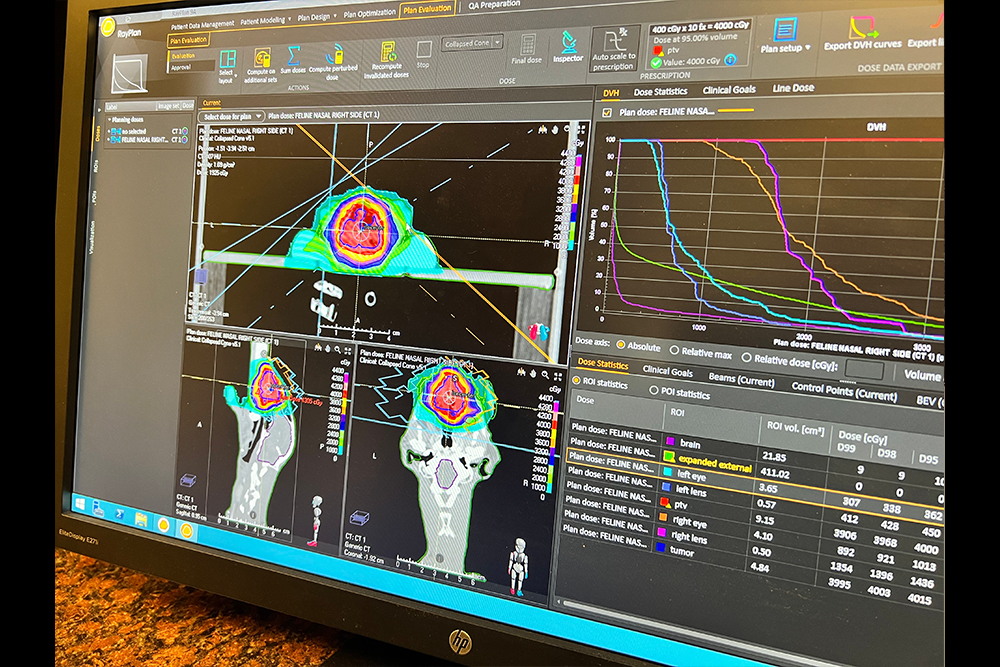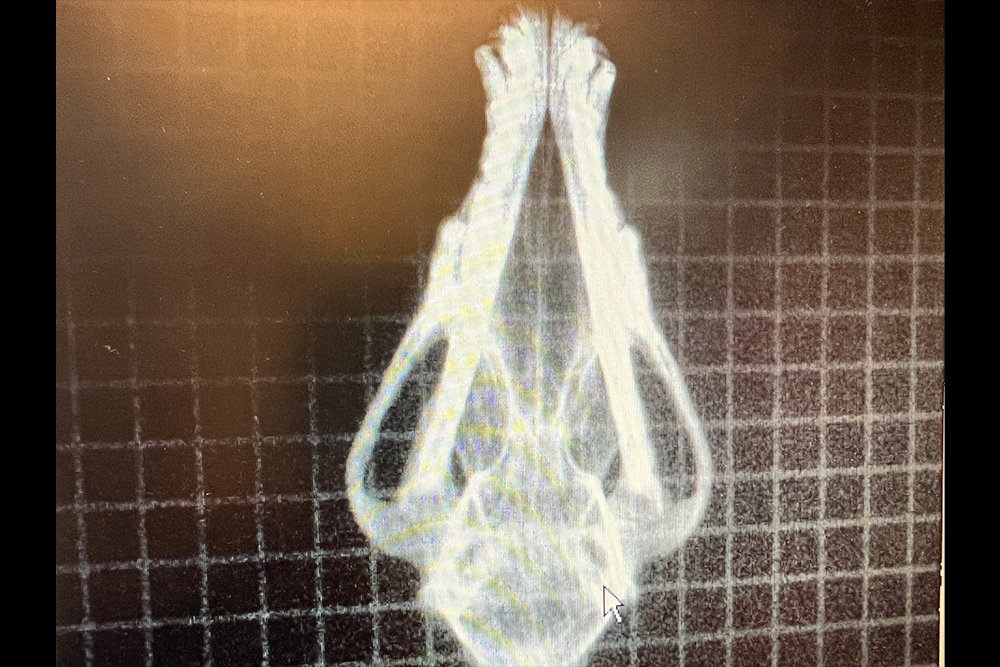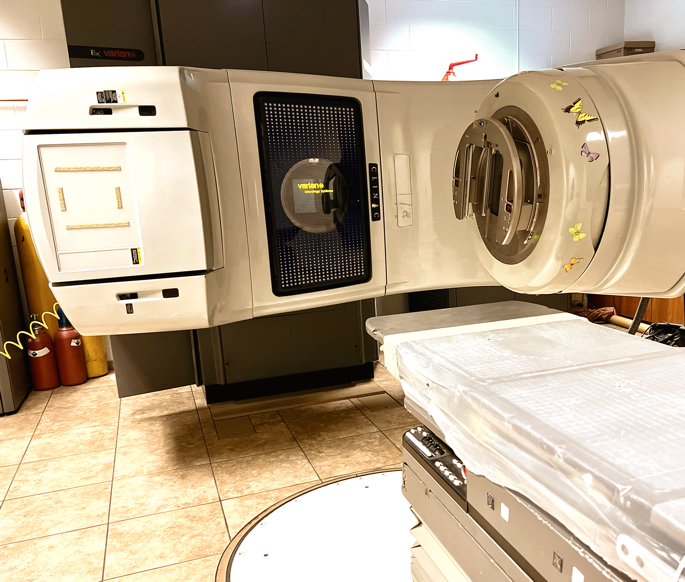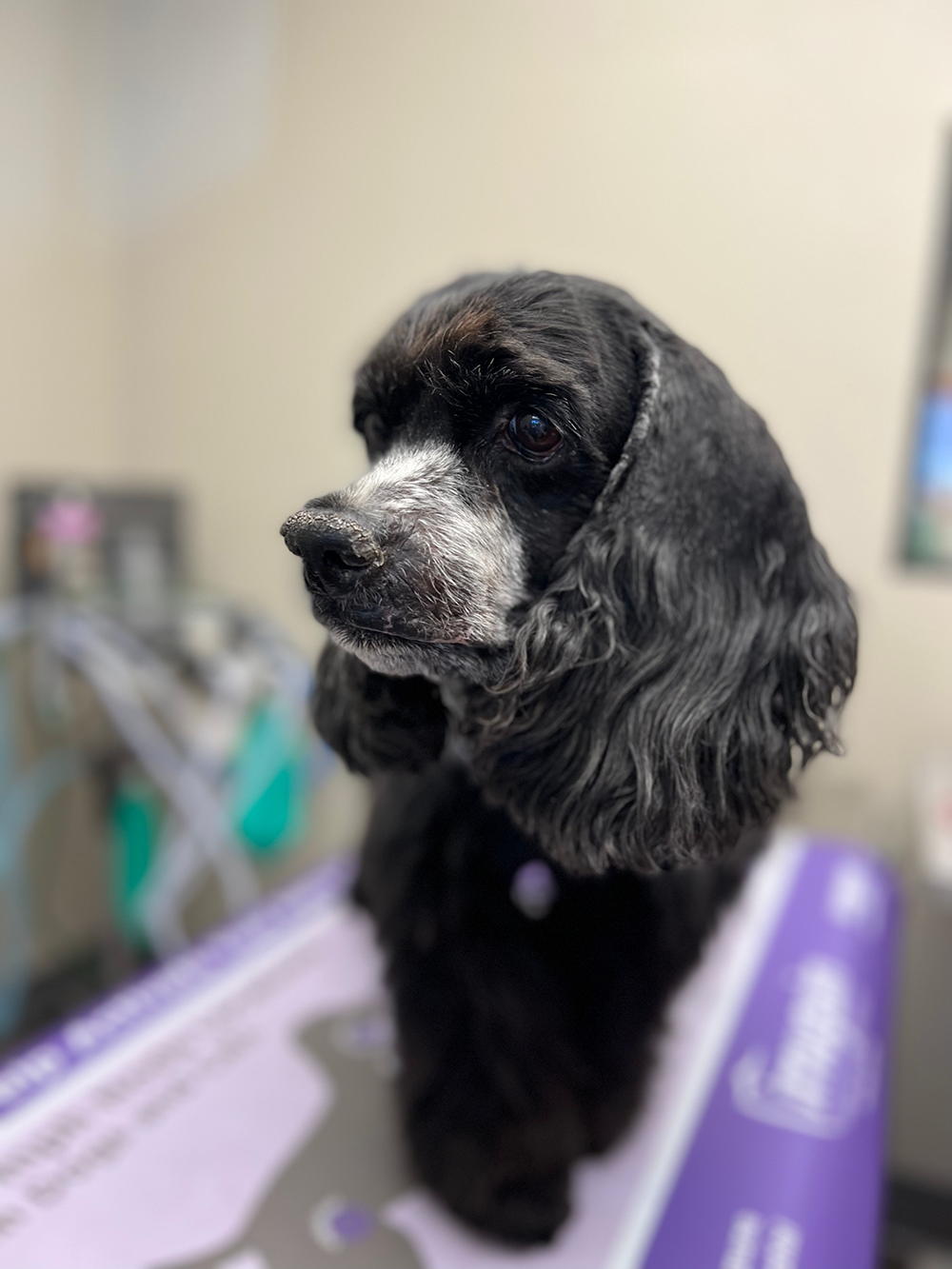Radiation Therapy
Expertise
Our Expertise in Radiation Therapy
Radiation therapy is effective for control of certain types of cancer. It may be used alone or in combination with other forms of treatment. Radiation therapy is indicated for the treatment of tumors that would have unacceptable functional and/or cosmetic side effects if they were surgically removed. It can also be used to eliminate residual disease left behind when surgery could not remove the entire tumor without creating serious side effects.
Effects
Side Effects of Radiation Therapy
All side effects associated with radiation therapy will be limited only to the area where the radiation is applied. “Radiation sickness,” known in human patients, is manifested by nausea, vomiting, and diarrhea and is not seen in veterinary patients. Some redness, itchiness or general irritation may exist in the radiation treatment field.
Therapy
How Radiation Therapy is Administered
Radiation therapy cannot safely be given in a single large dose; therefore, small doses are administered over a short period of time to control the tumor with minimal damage to surrounding normal tissues. Radiation therapy is usually given in 12 or more small doses of radiation over a 3-4 week period.
Our radiation unit is a 6 meV linear accelerator with surface electron capability. Each treatment requires 10-30 minutes. The patient must remain perfectly still during the treatment so that the radiation only goes where it is needed. A short-acting anesthetic is given to immobilize the patients. There is a small but definite risk associated with repeated anesthesia; therefore, patients are monitored closely.
Acceleration
Linear Accelerator (LINAC)
The linear accelerator (LINAC) is a machine that emits highly localized radiation and is commonly used to deliver external beam radiation treatments for patients with cancer. External beam radiation therapy is a method for delivering a beam of high energy X-rays to a patient’s tumor. The beam is generated outside the patient’s body and targeted at the tumor site. It delivers a uniform dose of high energy X-rays to the region of the patient’s tumor. These X-rays can destroy the cancer cells while allowing normal surrounding tissue to be spared.
Therapy
What to Expect After Radiation Therapy
The effects of the radiation therapy are not instantaneous. Most tumors will not have any visible changes for several weeks. Some will stay the same size but stop growing. The most important thing to remember is that while the side effects will be manageable and could change over time, tumor control should be longer term. Your veterinary oncologist will work closely with you to keep your animal comfortable and healthy during radiation therapy.

Contact
Need further help?
Our team of experts is always here to provide further assistance in answering any questions to make this the smoothest process.

